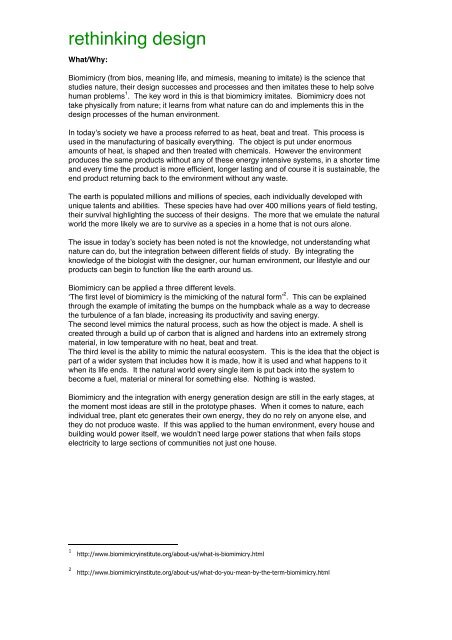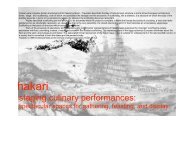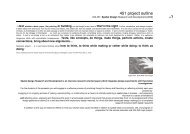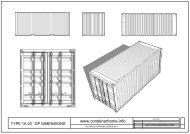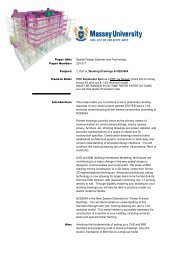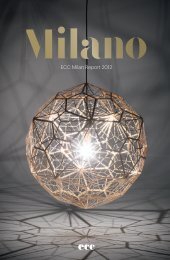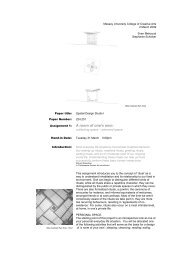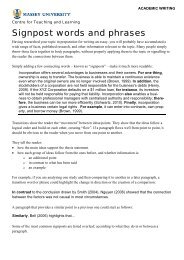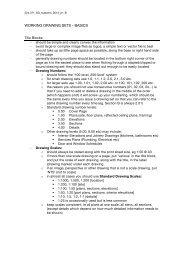rethinking design - Spatial Design@Massey
rethinking design - Spatial Design@Massey
rethinking design - Spatial Design@Massey
You also want an ePaper? Increase the reach of your titles
YUMPU automatically turns print PDFs into web optimized ePapers that Google loves.
ethinking <strong>design</strong>What/Why:Biomimicry (from bios, meaning life, and mimesis, meaning to imitate) is the science thatstudies nature, their <strong>design</strong> successes and processes and then imitates these to help solvehuman problems 1 . The key word in this is that biomimicry imitates. Biomimicry does nottake physically from nature; it learns from what nature can do and implements this in the<strong>design</strong> processes of the human environment.In todayʼs society we have a process referred to as heat, beat and treat. This process isused in the manufacturing of basically everything. The object is put under enormousamounts of heat, is shaped and then treated with chemicals. However the environmentproduces the same products without any of these energy intensive systems, in a shorter timeand every time the product is more efficient, longer lasting and of course it is sustainable, theend product returning back to the environment without any waste.The earth is populated millions and millions of species, each individually developed withunique talents and abilities. These species have had over 400 millions years of field testing,their survival highlighting the success of their <strong>design</strong>s. The more that we emulate the naturalworld the more likely we are to survive as a species in a home that is not ours alone.The issue in todayʼs society has been noted is not the knowledge, not understanding whatnature can do, but the integration between different fields of study. By integrating theknowledge of the biologist with the <strong>design</strong>er, our human environment, our lifestyle and ourproducts can begin to function like the earth around us.Biomimicry can be applied a three different levels.ʻThe first level of biomimicry is the mimicking of the natural formʼ2.This can be explainedthrough the example of imitating the bumps on the humpback whale as a way to decreasethe turbulence of a fan blade, increasing its productivity and saving energy.The second level mimics the natural process, such as how the object is made. A shell iscreated through a build up of carbon that is aligned and hardens into an extremely strongmaterial, in low temperature with no heat, beat and treat.The third level is the ability to mimic the natural ecosystem. This is the idea that the object ispart of a wider system that includes how it is made, how it is used and what happens to itwhen its life ends. It the natural world every single item is put back into the system tobecome a fuel, material or mineral for something else. Nothing is wasted.Biomimicry and the integration with energy generation <strong>design</strong> are still in the early stages, atthe moment most ideas are still in the prototype phases. When it comes to nature, eachindividual tree, plant etc generates their own energy, they do no rely on anyone else, andthey do not produce waste. If this was applied to the human environment, every house andbuilding would power itself, we wouldnʼt need large power stations that when fails stopselectricity to large sections of communities not just one house.1 http://www.biomimicryinstitute.org/about-us/what-is-biomimicry.html2 http://www.biomimicryinstitute.org/about-us/what-do-you-mean-by-the-term-biomimicry.html


